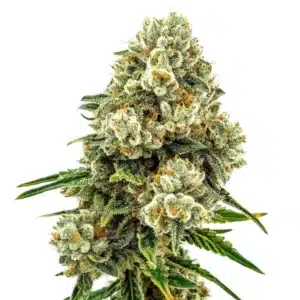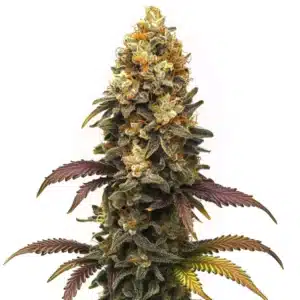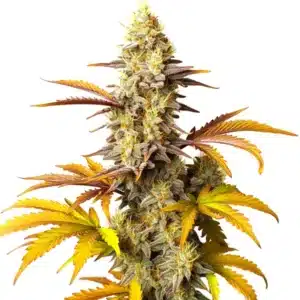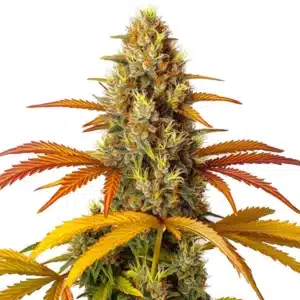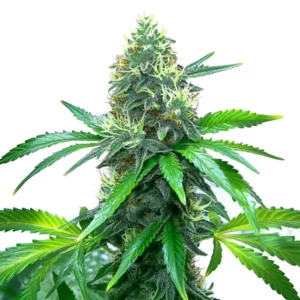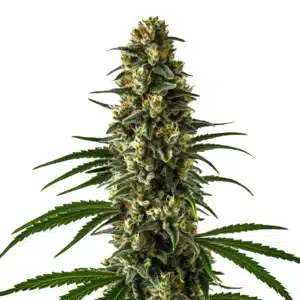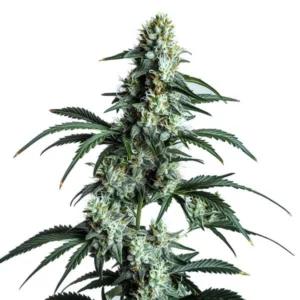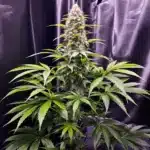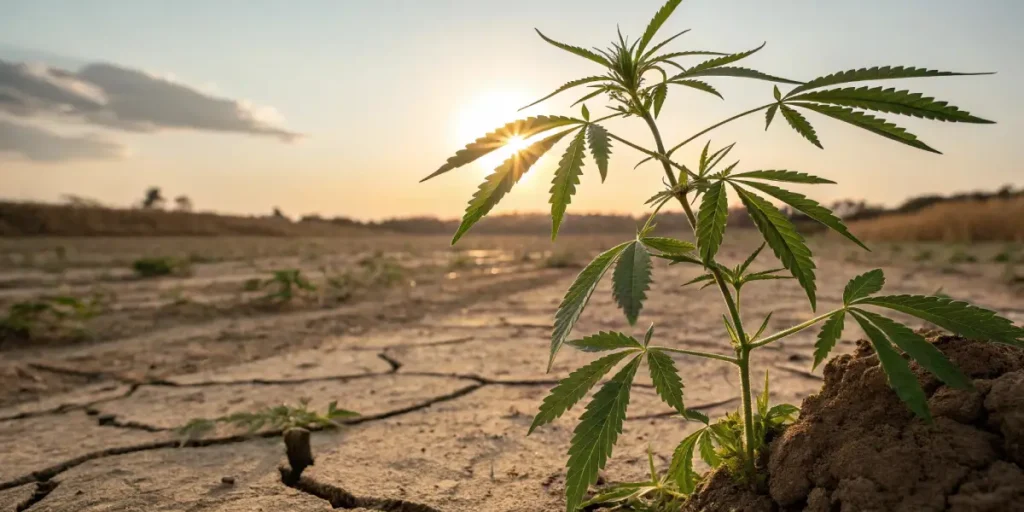
The Grower’s Fortress: Defeating Environmental Stress in Your Garden
Growing cannabis is a conversation between you and your plant. The plant tells you what it needs, and when it’s unhappy, it doesn’t whisper, it screams. Wilting, yellowing, weak stems… these are all symptoms of environmental stress.
Your job as a grower isn’t just to feed and water; it’s to be a fortress builder. You need to create an environment so stable and perfect that stress can’t even get through the gates. Let’s break down the main enemy combatants and how to build your defenses.
Recommended Strains
Acid Diesel
|
|
THC | 18% - 20% (Medium) |
|
|
Type | Feminized |
|
|
Yield | Low |
|
|
Phenotype | 60% Indica / 40% Sativa |
BC Diesel
|
|
THC | 18% - 20% (Medium) |
|
|
Type | Feminized |
|
|
Yield | Medium |
|
|
Phenotype | 35% Indica / 65% Sativa |
The War on Nutrient Stress: It All Starts with pH
This is the big one. You see yellowing leaves, you panic, you add more nutrients. And it gets worse. Sound familiar?
Listen to me: the problem is almost never a lack of food. The problem is your plant can’t eat the food that’s already there. And the gatekeeper to all nutrition is your pH.
For soil grows, you must master a stable watering pH of 6.0. If your pH drifts up towards 7, your plant can’t absorb critical microelements like iron. If it drops below 5, it can’t get nitrogen. This is called nutrient lockout.
And how does the plant tell you it’s starving for nitrogen? It starts sacrificing its old, lower leaves. Nitrogen is a mobile nutrient, so the plant intelligently steals it from the bottom to feed the new, important growth at the top. Yellowing bottom leaves are a cry for help, and the first thing you should check is your pH, not your fertilizer bottle.
Promos & Deals
Defending Against The Elements: Water, Light & Temperature
Water Stress: For outdoor growers, a long, hot spell without rain is a major threat. Having a reliable water source nearby is critical. But for both indoor and outdoor grows, the simplest defense against water stress is mulch. A good layer of mulch on your soil acts like a shield. It keeps the soil and roots cool, and dramatically slows down evaporation, creating a stable, moist environment.
Light Stress: Your plant’s relationship with light is a classic Goldilocks story. Too little light, and your plant will stretch desperately for the source, resulting in weak, “spindly” stems that can’t even support the weight of the leaves. Too much light, and you’ll get a sunburn, bleached, yellow, or burnt leaves at the very top of the plant.
Temperature Stress: Big, sudden drops in temperature between day and night are a huge shock to a plant’s system, especially in late flower. Keep an eye on your nighttime temps to avoid this.
The Recovery Plan & General Health
Okay, you’ve identified and fixed a stressor. How do you help your plant recover? A gentle feed with a supplement containing natural plant hormones like auxins and gibberellins (found in kelp/seaweed extracts) is like a vitamin shot for a stressed plant, helping it get back on its feet.
And don’t forget basic hygiene. Pests love to hide and lay eggs on the underside of leaves. This is also where your plant breathes. Regularly and gently cleaning the bottom of your fan leaves keeps the plant healthy and lets you spot an invasion before it becomes a war.
When you Cultivate a fortress-like environment, you can handle anything. Resilient strains like Blue Dream, OG Kush, and Sour Diesel are fantastic because they can withstand minor mistakes while you learn to perfect their world. You Nurture the environment, and your Homegrown plants will Thrive.
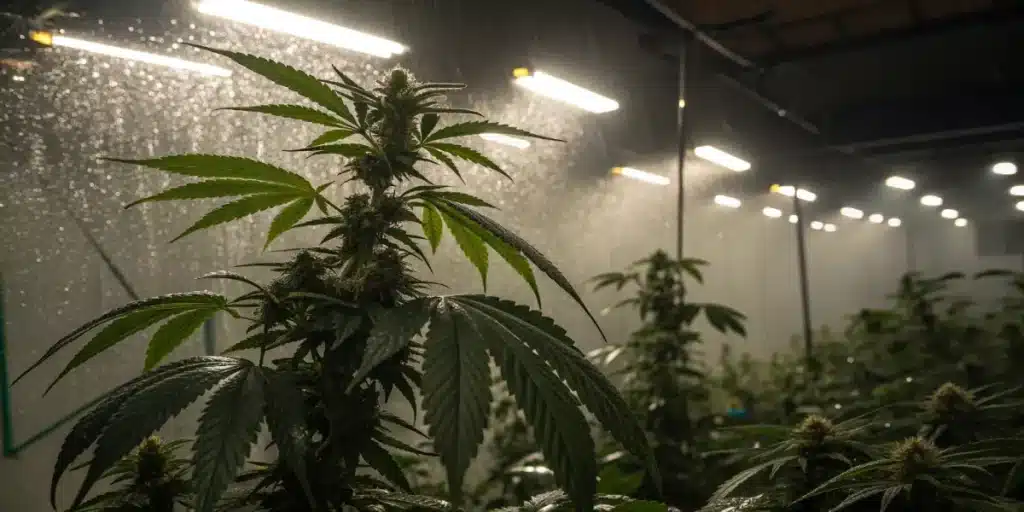
Frequently Asked Questions
What’s the first sign of stress in a cannabis plant?
Its posture. Before leaves even change color, a stressed plant will often look “flaccid” or droopy. Its leaves won’t be praying up towards the light; they’ll look tired and heavy, even if the soil is properly watered. This is the first universal signal that something is wrong.
Why do the bottom leaves of my plant turn yellow first?
This is the classic sign of a nitrogen deficiency, which is usually caused by an incorrect pH. Nitrogen is a “mobile nutrient,” so the plant will move it from the old, lower leaves to where it’s needed most: the new growth at the top. The bottom leaves are the plant’s early warning system.
How does mulch protect my plants from water stress?
Mulch acts as a protective blanket for your soil. It dramatically reduces evaporation from the sun and wind, meaning your soil stays moist for much longer. It also insulates the root zone, keeping temperatures stable. This creates a much more consistent and less stressful environment for your plant’s roots.
What can I give my plant to help it recover from stress?
After you’ve fixed the source of the stress, you can help your plant bounce back with a supplement rich in natural plant hormones. Products based on kelp or seaweed are perfect because they contain auxins, gibberellins, and cytokinins, which are crucial for regulating growth and recovery.


